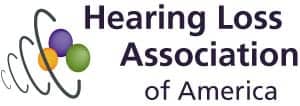Those who need hearing aids are often the last ones to seek help. In some cases, frustrated relatives may convince loved ones to visit a hearing care professional, but what are the odds that these reluctant patients will become active hearing aid wearers?
Clinical expertise is essential, but audiologists and hearing aid specialists with a firm grasp of psychology are often the most convincing. “The first thing is to reassure patients that they are not alone with hearing loss,” says Thomas Tedeschi, AuD, chief of Audiology at Minneapolis-based Amplifon America. “It is one of the most common problems that occur with people as they age.”
The second point to emphasize is that hearing loss is a real problem with real social and physical consequences. Talking about it is one thing, but measuring the actual hearing deficit is a crucial third step toward acceptance. “The hearing test is always important because it shows the exact level of the hearing loss,” Tedeschi explains. “It helps patients to start to see reality, because a lot of times they come in kicking and screaming and don’t believe they have a problem.”
Familiar questionnaires and assessment tools add a fourth element to help complete the full picture for audiologists and patients. Tedeschi explains: “Now you can begin to guide patients through the hearing loss journey. It used to be that clinicians would make it very medical. They’d take the audiogram and say, ‘Here is normal hearing and here is your hearing loss.’ That scenario works with a few people, but today it’s much easier to help individuals understand their hearing loss if you can equate it into terms that they understand.”
Related Article: Illustrative Analogies for Dispensing Professionals
“Too many hearing healthcare providers fail to make use of self-assessment measures,” adds John Greer Clark, PhD, professor emeritus, Department of Communication Sciences and Disorders, University of Cincinnati and co-author of Counseling-Infused Audiologic Care. “But when these are used to help patients reflect on the personal impact of hearing loss, we are afforded useful insights to bring into our discussions. Ensuing discussions help set us apart from the competition by revealing us to be caring providers who really want to hear our patients’ stories while simultaneously moving reluctant patients toward rehabilitative goals.”
A fifth technique is to have ready responses to familiar modes of push-back. Aforementioned questionnaires can lead to fruitful dissections of common objections. For example, prospective hearing aid wearers often don’t see their hearing loss as a “big deal,” partly because they have developed coping mechanisms over a long period of time. Tedeschi reminds patients that hearing loss is gradual, but “if you would have lost your hearing overnight with the amount of hearing loss that you have today, you would have gone to the emergency room and said, ‘Hey something is definitely wrong.’”
Assuming all these points are taken to heart, the sixth building block toward acceptance is a full presentation of solutions. “Stress that remediation is easy,” Tedeschi says, “and we can get you back to where you will be able to communicate effectively and participate. As you take these assessment tools and you start to discuss them with patients, you can start to lead them gently into this journey to assist them with solutions to their hearing problems.”
Acknowledging the role of vanity in the search for solutions can be helpful, but Tedeschi notes that hearing aid users in for their second hearing aid are usually free from such concerns, and instead simply ask, “What would you recommend?” and state unequivocally, “I don’t care what it looks like.”
The seventh sage suggestion is financing, like the services offered by Ally Lending, which may indeed seal the deal by providing real-world ways to address the ever-present cost barrier.
“Once patients understand hearing loss and see the need for help, the next step is paying for the device—and it is sticker shock for a lot of individuals,” Tedeschi laments. “They’re very surprised that insurance doesn’t cover it. Some Medicare Advantage programs are providing some assistance, but still when patients hear the cost of hearing aids, they say ‘wow.’ At that point, flexible financing becomes very important.” “Financing is a very popular option, and often a necessity to help individuals,” he continues. “Most patients either pay for hearing aids up front or through a personalized financing plan over a year or two years with very low interest, or even no interest. It is very popular and highly useful.”
About the author: Greg Thompson is a freelance writer and a former editor of Physical Therapy Products and other publications. He is based in Loveland, Colo.





